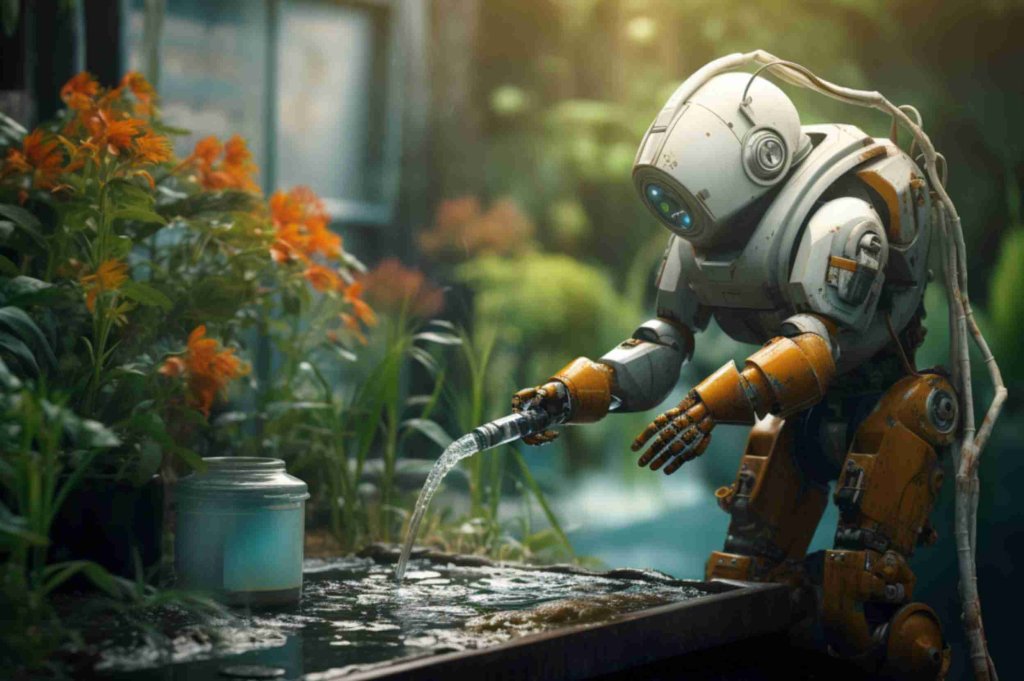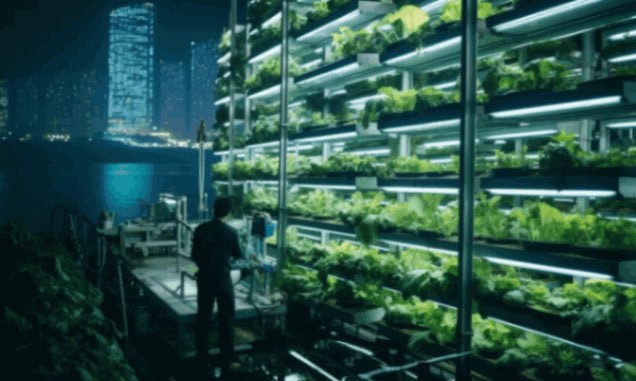AI in Agriculture: Enhancing Productivity and Sustainability
The integration of Artificial Intelligence (AI) into agriculture is revolutionizing the way we approach farming and food production. With the global population projected to reach 9.7 billion by 2050, the demand for food will increase significantly. AI offers innovative solutions to enhance productivity, ensure sustainability, and meet this growing demand. This blog post explores the various applications of AI in agriculture, highlighting its impact on productivity and sustainability. Supported by the latest research and data, we will delve into the benefits, challenges, and future directions of AI in this critical sector.
The Role of AI in Modern Agriculture

Precision Farming
Precision farming involves the use of AI technologies to optimize crop yields and reduce waste. By analyzing data from sensors, drones, and satellites, AI systems can provide real-time insights into soil health, crop conditions, and weather patterns.
Latest Research and Data:
- According to a report by MarketsandMarkets, the precision farming market is expected to grow from $7 billion in 2020 to $12.8 billion by 2025, driven by the adoption of AI and IoT technologies (Cloudwards).
Crop Monitoring and Management
AI-powered drones and satellite imagery enable continuous monitoring of crops, identifying issues such as pests, diseases, and nutrient deficiencies. Machine learning algorithms analyze this data to provide actionable recommendations for farmers.
Example: Blue River Technology, a subsidiary of John Deere, uses computer vision and machine learning to precisely target and manage crops, reducing the need for chemical inputs (Rapid7).
Soil Health and Management
AI tools can analyze soil data to determine its health and fertility. By understanding the soil composition and moisture levels, farmers can make informed decisions about irrigation, fertilization, and crop rotation.
Latest Research and Data:
- A study published in Nature found that AI-driven soil management practices can increase crop yields by up to 20% while reducing water and fertilizer usage by 15% (Thales Group).
Enhancing Productivity with AI

Yield Prediction
AI models can predict crop yields with high accuracy by analyzing historical data, weather patterns, and current crop conditions. This helps farmers plan their harvests and manage supply chains more effectively.
Example: Climate Corporation’s FieldView platform uses AI to provide farmers with detailed yield predictions and insights into field variability .
Autonomous Machinery
AI-powered autonomous tractors and harvesters can perform tasks such as planting, weeding, and harvesting with precision and efficiency. These machines reduce labor costs and increase operational efficiency.
Latest Research and Data:
- According to a report by Allied Market Research, the market for autonomous tractors is expected to reach $4.9 billion by 2027, growing at a CAGR of 24.0% from 2020 to 2027 .
Pest and Disease Control
AI algorithms can detect pests and diseases early by analyzing images and sensor data. This allows for targeted treatments, reducing the need for broad-spectrum pesticides and minimizing environmental impact.
Example: Plantix, an AI-powered app, helps farmers identify plant diseases and pests by analyzing photos taken with their smartphones. The app provides treatment recommendations and preventive measures .
Promoting Sustainability through AI
Water Management

AI-driven irrigation systems optimize water usage by analyzing soil moisture levels, weather forecasts, and crop requirements. This ensures that crops receive the right amount of water at the right time, conserving water resources.
Latest Research and Data:
- A study by the International Water Management Institute (IWMI) found that AI-based irrigation systems can reduce water usage by up to 30% while maintaining or improving crop yields .
Reducing Chemical Use
By precisely targeting pests, diseases, and nutrient deficiencies, AI reduces the need for chemical inputs such as pesticides and fertilizers. This minimizes environmental pollution and promotes sustainable farming practices.
Carbon Footprint Reduction
AI technologies can help farmers adopt practices that reduce greenhouse gas emissions, such as no-till farming, cover cropping, and optimized fertilizer application. These practices enhance soil health and sequester carbon.
Example: Indigo Agriculture uses AI to promote regenerative farming practices that improve soil health and capture carbon. Their system provides farmers with data-driven recommendations to optimize their farming practices .
Challenges and Considerations

Data Privacy and Security
The widespread use of AI in agriculture involves collecting and analyzing large amounts of data. Ensuring the privacy and security of this data is crucial to gaining farmers’ trust and protecting sensitive information.
High Initial Costs
The adoption of AI technologies requires significant investment in hardware, software, and training. While the long-term benefits are substantial, the high initial costs can be a barrier for small and medium-sized farms.
Latest Research and Data:
- According to a report by McKinsey, the upfront cost of implementing AI in agriculture can be a significant barrier, particularly for smallholder farmers. However, the report also highlights that the return on investment (ROI) can be substantial, with potential yield improvements of 10-20% .
Technological Integration
Integrating AI systems with existing farm equipment and practices can be challenging. Farmers need user-friendly interfaces and seamless integration to fully benefit from AI technologies.
Future Directions of AI in Agriculture

Enhanced AI Models
Future AI models will be more accurate and capable of analyzing a broader range of data inputs. This will lead to more precise recommendations and better decision-making for farmers.
Increased Adoption of IoT
The Internet of Things (IoT) will play a crucial role in the future of AI in agriculture. Connected devices will provide real-time data on soil, weather, and crop conditions, enabling more accurate and timely AI analyses.
Development of Sustainable Practices
AI will continue to drive the development of sustainable farming practices. By optimizing resource use and reducing environmental impact, AI will help ensure the long-term viability of agriculture.
Collaboration and Knowledge Sharing
Collaboration between technology providers, research institutions, and farmers will be essential to the successful implementation of AI in agriculture. Knowledge sharing and training will help farmers adopt and benefit from AI technologies.
Latest Research and Data:
- A report by the Food and Agriculture Organization (FAO) emphasizes the importance of collaboration and knowledge sharing in promoting sustainable agriculture and highlights several successful case studies from around the world .
Conclusion
AI is transforming agriculture by enhancing productivity and promoting sustainability. From precision farming to autonomous machinery, AI technologies offer innovative solutions to the challenges faced by modern agriculture. While there are challenges to overcome, the potential benefits of AI in agriculture are immense. By adopting AI-driven practices, farmers can increase yields, reduce environmental impact, and ensure the long-term sustainability of their operations. By embracing AI innovations and implementing sustainable farming practices, the agricultural sector can meet the growing demand for food while preserving the environment for future generations.
Stay ahead in the rapidly evolving field of AI and data science by enrolling in the Data Science course at the Boston Institute of Analytics. This comprehensive course will equip you with the skills needed to navigate the complexities of AI and data science. Gain hands-on experience, learn from industry experts, and advance your career.
Frequently asked questions
Q1. How is AI used in modern agriculture?
AI in agriculture is applied in precision farming, crop monitoring, soil health analysis, and smart irrigation. These solutions boost farm productivity and ensure sustainable agriculture practices. Enrolling in an artificial intelligence course in India can help you learn these applications hands-on.
Q2. What is precision farming with AI?
Precision agriculture with AI uses drones, IoT sensors, and machine learning models to optimize irrigation, fertilization, and pest control. This leads to higher crop yields and reduced resource wastage. A machine learning course online can help you understand the models behind precision farming.
Q3. How does AI improve crop monitoring and pest control?
AI-powered tools in farming help detect pests, diseases, and nutrient deficiencies early. With AI in crop monitoring, farmers use apps and computer vision for targeted treatments, reducing chemical usage. Professionals can explore this further in a data science certification course.
Q4. Can AI help in sustainable farming practices?
Yes, AI supports sustainable farming by conserving water, reducing chemical inputs, and lowering carbon emissions through optimized resource usage and regenerative practices.
Q5. What are the challenges of AI adoption in agriculture?
High initial costs, data privacy concerns, and integration with existing systems are key challenges. Small farmers especially face barriers in implementing AI tools.
Q6. How can AI predict crop yields accurately?
AI models analyze historical data, soil conditions, and weather patterns to predict yields, helping farmers plan harvests and manage supply chains effectively. Students pursuing a business analytics course can learn how predictive models benefit agriculture.
Q7. Which courses can help me learn AI for agriculture?
You can join a data science and AI course in Pune near me to understand machine learning, IoT, and predictive analytics for agriculture applications.
Q8. Where can I read more about AI’s impact on industries?
Check our blog on AI in Aviation and AI Bots in Internet Security for cross-industry applications.






